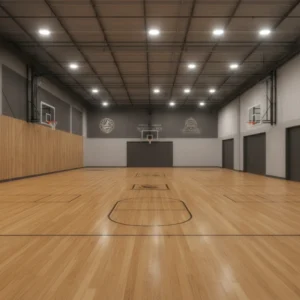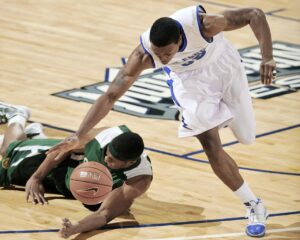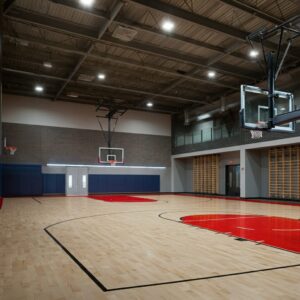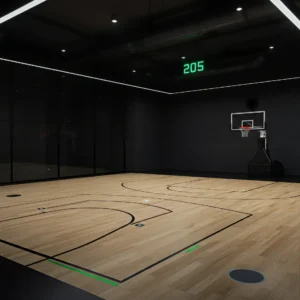When designing an outdoor basketball court, one of the most critical decisions you’ll make is choosing the right flooring material. Many people wonder whether hardwood flooring, a classic choice for indoor courts, can function just as well outdoors. While hardwood may be an excellent option for indoor courts with its premium aesthetics and responsiveness, outdoor environments come with unique challenges that make hardwood less suitable.
This guide explores the properties of hardwood flooring, the demands of outdoor basketball courts, the challenges of using hardwood outside, and better alternatives to create a durable, safe, and high-performing outdoor court.
Understanding Hardwood Flooring
Hardwood flooring is renowned for its beauty and high performance, making it a favorite for indoor basketball courts. With a smooth surface and excellent ball response, hardwood gives players a premium experience.
Advantages of Hardwood Flooring
- Responsiveness: Hardwood provides consistent ball bounce and precise movement, which is why professional indoor courts often use it.
- Durability (indoors): Indoors, hardwood can last decades with proper care.
- Aesthetic Appeal: Hardwood’s polished finish conveys professionalism and elegance.
- Traction: Properly treated hardwood gives players the grip needed for superior performance.
Drawbacks of Hardwood in General
- Moisture Sensitivity: Even indoors, excessive moisture can damage hardwood by causing warping or swelling.
- High Maintenance: Hardwood requires regular cleaning, sealing, and refinishing to maintain its condition.
- Cost: Premium hardwood is one of the more expensive flooring options to install and maintain.
While these attributes make hardwood ideal for controlled indoor environments, the story changes when you take this material outdoors.
Outdoor Basketball Courts and Their Unique Needs
Outdoor basketball courts are subject to environmental stressors and demands that significantly differ from indoor designs.
Typical Materials for Outdoor Basketball Courts
Outdoor courts are designed to handle weather exposure, heavy foot traffic, and the unpredictability of open environments. Common materials include:
- Acrylic Coating: Provides excellent grip and comes in customizable designs and colors.
- Rubber Flooring: Shock-absorbent, weather-resistant, and durable.
- Polypropylene Tiles: Modular, waterproof, and easy to install or replace.
What Makes These Materials Ideal?
- Weather Resistance: UV rays, rain, and temperature fluctuations don’t compromise these materials.
- Durability: Outdoor court materials are built to withstand heavy use over time.
- Low Maintenance: These surfaces require relatively simple cleaning and minimal upkeep.
- Player Safety: Features like slip resistance and shock absorption minimize injury risks.
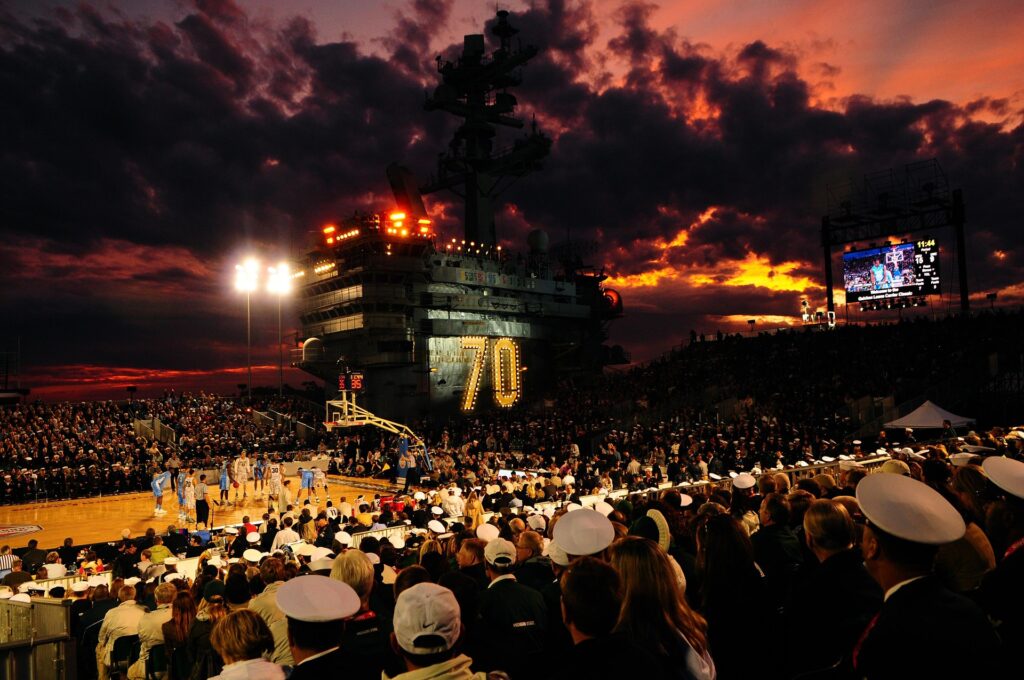
The Challenges of Using Hardwood Flooring Outdoors
Using hardwood flooring for outdoor basketball courts might seem like a good idea at first because of its performance indoors. However, the challenges far outweigh the benefits when exposed to outdoor conditions.
1. Weather Exposure
Rain, snow, UV rays, and extreme heat or cold wreak havoc on hardwood. Moisture can lead to:
- Warping and Cracking: Exposure to water causes hardwood to swell and crack, compromising its structural integrity.
- Fading: Extended sun exposure dulls the polished finish of hardwood.
- Rot: Excessive moisture can promote rot, making hardwood unsafe and unusable over time.
2. Maintenance Requirements
Maintaining hardwood outdoors is labor-intensive and expensive:
- Frequent refinishing to repair surface damage.
- Resealing regularly to protect from moisture.
- Constant cleaning to prevent dirt and grime buildup.
3. Safety Concerns
Hardwood surfaces can grow slippery when wet, increasing the risk of slips and falls. Outdoor environments, with unpredictable weather conditions, greatly amplify this safety hazard.
4. Short Lifespan
Even with maintenance, outdoor hardwood flooring will deteriorate far faster than materials designed for open environments. This makes it neither cost-effective nor practical for outdoor basketball courts.
Alternative Materials for Outdoor Basketball Courts
The good news? Many excellent alternatives are specifically designed for outdoor basketball courts. These options are durable, safe, and cost-effective, ensuring players have the best possible surface for their game.
1. Acrylic Sports Flooring
Acrylic is a popular choice for outdoor courts, combining style and practicality:
- Weather Resistance: Designed to handle rain, sun, and temperature changes.
- Customizable: Available in various colors and textures.
- Grip and Safety: Offers optimal traction while being easy on the joints.
2. Rubber Surfacing
Rubber is an eco-friendly, player-safe option offering:
- Superior Shock Absorption: Minimizes stress on players’ bodies during intense games.
- Durability: Highly resistant to wear and tear.
- Low Cost: Easy to install and maintain.
3. Polypropylene (Interlocking Tiles)
Polypropylene tiles are modular, highly durable, and efficient:
- Ease of Installation: Interlocking tiles are quick to install and replace.
- Waterproof: Perfect for outdoor use, no matter the weather.
- Versatility: Comes in different colors and styles to suit your court’s aesthetic.
Why Choose Biomass or Waterproof Wooden Flooring?
If you’re still leaning toward a wood-like option, we recommend exploring innovative solutions like Coposports biomass sport flooring or waterproof sport wooden flooring. These materials combine the aesthetic of wood with the resilience required for the outdoors, offering better resistance to water, wear, and weather.
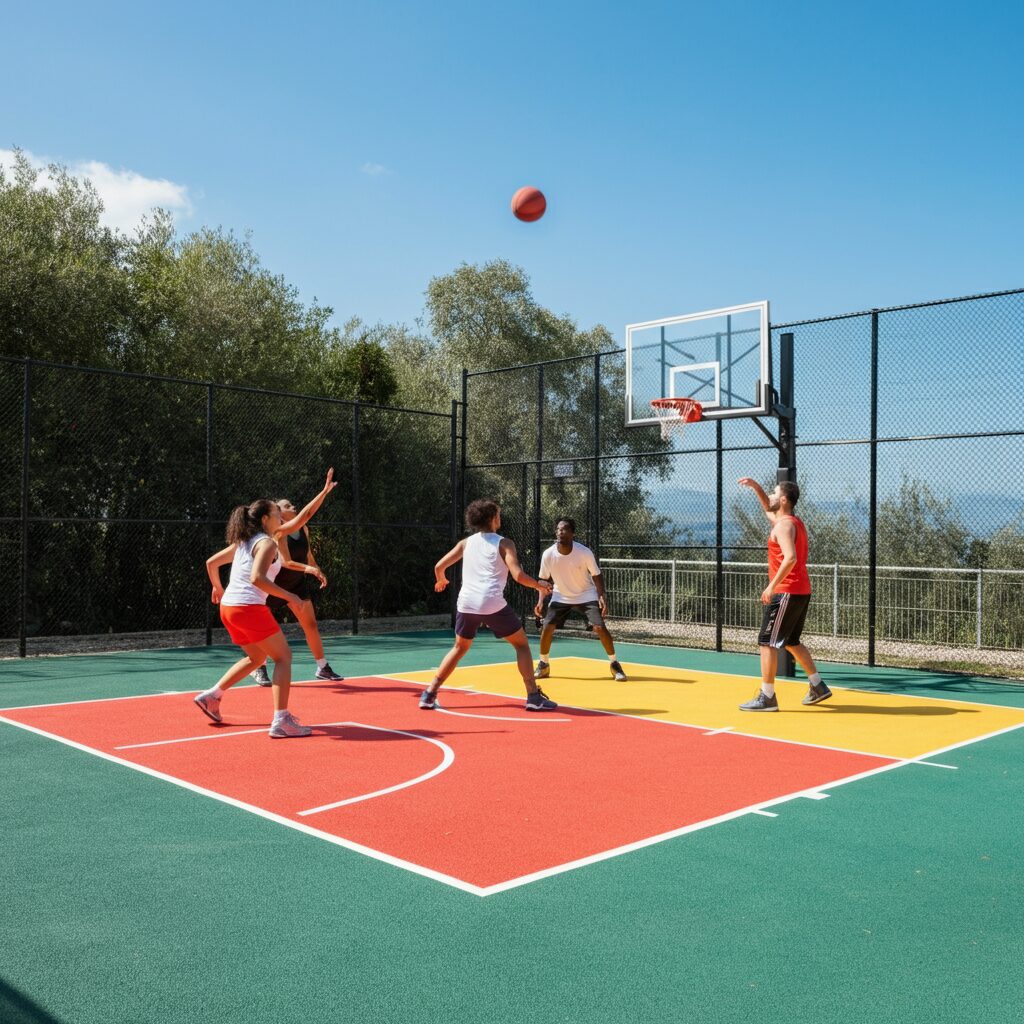
Build the Perfect Outdoor Court with the Right Materials
Hardwood flooring may reign supreme indoors, but when it comes to outdoor basketball courts, it falls short due to its inability to withstand harsh weather conditions and heavy outdoor usage. Instead, materials like acrylic, rubber, and polypropylene provide better durability, safety, and value for your investment. They ensure your court remains high-performing, whether it’s in a professional facility or your very own backyard.
Looking for specialized solutions for your next outdoor court project? Contact us today to learn more about high-quality court materials like Coposport biomass sport flooring and waterproof sport wooden flooring. Our expert team can help you find the perfect surface for your needs.
Frequently Asked Questions (FAQ)
Q1: How durable are outdoor sports flooring options?
A1: Outdoor sports flooring options, such as CopoSports biomass sport flooring, are designed to be highly durable. They can withstand intense activity, varying weather conditions, and prolonged use without compromising performance or aesthetics.
Q2: Are these flooring options eco-friendly?
A2: Yes! Many modern flooring solutions, including biomass sport flooring, are created with sustainability in mind. These products often use eco-friendly materials and processes to minimize environmental impact.
Q3: Can these flooring solutions handle heavy rainfall or extreme sunlight?
A3: Absolutely. Waterproof sport wooden flooring is engineered to resist water damage and UV exposure, ensuring a long lifespan even in challenging weather conditions.
Q4: How do I maintain outdoor sports flooring?
A4: Maintenance is simple. Regular cleaning with water and mild detergent is typically all that’s needed. For more stubborn dirt, consult the specific care instructions provided by the manufacturer.
Q5: Are there customizable options available?
A5: Yes, many outdoor sports flooring options come in various colors, styles, and designs to perfectly complement your court’s aesthetic and purpose. Customization ensures a unique and professional appearance for your facility.




